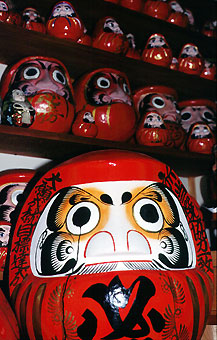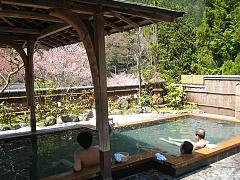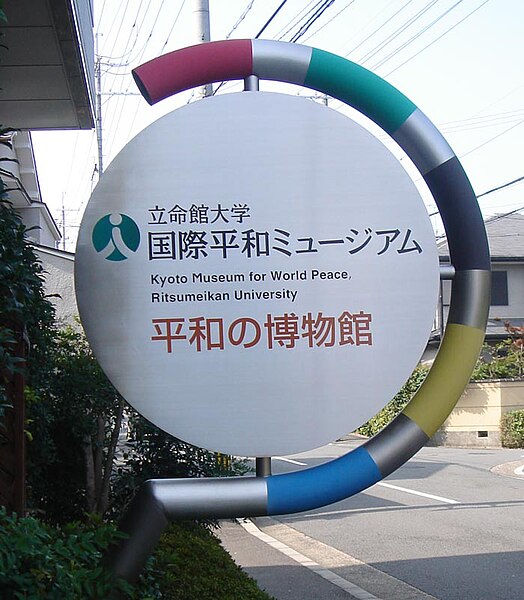
Valerie Duvauchelle at her house in Kamakura, Kanagawa Prefecture KRIS KOSAKA
Saturday, Jan. 30, 2010
Valerie Duvauchelle traded hectic life of film producer to teach French cuisine
By KRIS KOSAKA, Special to The Japan Times
Soothing sunlight fills the peaceful living space; arrayed atop a bamboo leaf, a slice of yuzu and mikan tart beckons, complemented by a steaming cup of herbal tea. In the Spartan abode of Valerie Duvauchelle, a French cooking teacher and zazen practitioner, nothing indicates her former life as an executive producer in the bustling midst of French cinema.
Duvauchelle alternates between Tokyo's Nakano and Kamakura, Kanagawa Prefecture, teaching French cuisine classes and practicing zazen. La cuisine de Valerie emphasizes unrefined, local ingredients, using food as a natural medicine for the body.
In only two years since launching the classes as a full-time enterprise, Duvauchelle has already met success with a solid customer base. She is featured in French journalist Dora Tauzin's "Tokyo Style," a book introducing interesting foreigners in Tokyo.
Duvauchelle takes the idea of macrobiotics back to its origins and ancient Greek physician Hippocrates. "Hippocrates believed in the body's natural properties to heal itself, and macrobiotics, his original term, just means 'long life.' "
To Duvauchelle, it is a natural extension of both her upbringing in France and her life in Japan, and Duvauchelle focuses on daily sustenance for the body and mind.
It was not always so. At 23, Duvauchelle worked as an art coordinator in Tokyo's bubble-expanded art scene of the early 1990s.
Already with three years' experience, the young Duvauchelle was busy preparing for an exhibition of world-famous graffiti artists, sponsored by shopping center operator Parco. "I was so young, still in the unconsciousness of youth. Art was the thing in Tokyo at the time, and I had always wanted to work in art, although I wasn't an artist myself."
Duvauchelle first traveled to Japan in the late 1980s to fulfill an internship while studying at the European Institute of Business.
She did internships in Hong Kong and the United States as well, but in Japan, when she arrived at the airport, she felt as if she were "a hand sliding into a glove." After graduation, Duvauchelle contrived an immediate return to Japan, and quickly adapted to the Japanese art scene, coordinating a dance show, preparing various exhibitions, culminating in the graffiti show.
It was summer 1992. "The bubble cracked. The graffiti exhibition was canceled and in six months, all the galleries closed. In three years, after feeling I had made so many connections, it was over. I was back in Paris."
Not yet 24, Duvauchelle started over. Working for the Louvre Museum Cafes, Duvauchelle washed dishes and pined for work again in the art world, surrounded as she was by the most famous collections in the world.
At this time, Duvauchelle first noticed a disconnect within herself, a disconnection from food. Growing up with gastronome parents, an appreciation of food and its culture had been instilled in Duvauchelle from an early age.
"For me, food was always important. Once a year, our parents took us all to a gourmet restaurant, to let us try another level of cuisine. On an everyday level, my mother really nourished us with the idea, 'you are what you eat,' how important food was to yourself. I always had a sensual relation to food, very balanced and health-conscious."
In the exciting chaos of an art coordinator's life in Tokyo, Duvauchelle's connection with food weakened, and back in Paris, in meager circumstances, the bond diminished even more. Duvauchelle focused on her career ambitions, and she began suggesting to her manager creative ways to coordinate the art surrounding the diners.
Her perseverance landed her an interview with the director of the entire organization of Louvre restaurants: "We had an official meeting, when I was still wearing my dishwasher's apron, and he listened to my ideas."
Although no changes occurred within the Louvre Cafes — "basically, the director told me they did not need to worry about competition" — his attention to her imagination reignited Duvauchelle's confidence, and she became determined to re-enter a creative field.
Love matched her determination, and Duvauchelle started a relationship with a young film director, who convinced her to work in film.
"Organizing things, coordination, finding sponsors or money — it's the same thing for a film, he said, and so we did it, and produced his first short film. Of course, I realized later it is not the same at all, many specialized skills in film, but it gave me my start."
Sucked once again into a frenzied creative enterprise, Duvauchelle worked for six years producing short films, working for the French giant Gaumont, and even briefly maintaining her own company, Hold-up Productions.
"During my years working in movies, I lost all connection to food. It was a sandwich at lunch, working late, partying even later, you wake up, skip breakfast for coffee. For nearly 10 years, I functioned on caffeine, alcohol and sandwiches."
Feeling her life spinning out of control, she created an opportunity to revisit Japan in 2000 by bringing a collection of short films to the French Film Festival in Yokohama. Although Duvauchelle had hoped to find work again in Japan, instead she accepted a position as executive producer for a French company, Horizon Productions.
Life accelerated even more; in one year, she made 10 short films. "It was the best kind of school. You have to react so quickly, with a lot of pressure. People start in short films mostly with the intention of doing features some day, and I had to consider my next step. I was at a crossing — should I push myself, no matter what it takes to be a features producer? How much would I sacrifice, for a cause I was not sure was my own?"
Finding her own cause nudged her again toward Japan, and Duvauchelle redoubled her efforts to find a way back to Asia.
A friend introduced her to the Executive Training Program sponsored by the European Commission, a professional development program for European executives eager to succeed in Japanese or South Korean markets.
Duvauchelle admits other applicants seemed more qualified, but her diffidence and quiet determination matched their criteria, and her proposal to start a short films branch in Japan was approved. At the same time, as part of a committee for UniFrance, an organization in charge of promoting French films abroad, Duvauchelle was finally given opportunities back in Japan.
Her spiral, however, inevitably ended in a crash. The ETP required six months of intensive language study to start the program. Working so hard to get back to Japan, Duvauchelle found herself in the same place, in the hectic world of film, studying Japanese to work in the industry, at the same time juggling her commitments to UniFrance.
Near desperation, Duvauchelle rediscovered zazen; she had first tried the meditation in Paris, but did not practice regularly. It took her a few months for the practice to reap benefits.
Eventually, Duvauchelle found the way, and after a year practicing on her own, she joined a Soto-shu Zen sect, with regular sesshin retreats at a temple in Hayama, Kanagawa Prefecture.
Add the flavor of serendipity: The Soto-shu sect boasts the Tenzo Kyokun by the renowned 13th-century monk Dogen — instructions for Zen temple cooks and also a manual on how to live, using cooking as a metaphor.
Duvauchelle had finally found the natural calling of her life, and she began studying shojin ryori (vegetarian food served at Buddhist temples) during the retreats, gaining the opportunity to work in the kitchens with the monks.
During one such retreat, a revelation illuminated her life's path: "It was about the fourth or fifth day of the retreat, and we were giving thanks for our white rice, and suddenly I could see the whole world on my plate in front of me, that truly food is life."
Astonished by the clean taste, Duvauchelle ran to the kitchens to ask the monks if they were using a new type of rice. Of course not, she realized; it was she who had transformed. She quit the film industry, and made cooking her livelihood.
"In Zen, you are taught two seemingly conflicting points — to always be in the present, and to always pursue your kokorozashi, or calling. I finally realized the more you are in the present, the more aware you are, the more your kokorozashi will come to you. Cooking for my livelihood came naturally."
For Duvauchelle, a connection with food discloses a connection with the soul.
For more information on La cuisine de Valerie, visit her blog at lacuisinedevalerie.blogspot.com
View Article in the Japan Times











 “Best Fashion Museum”
“Best Fashion Museum”



 Jeremy Abbott performs during his training session at Trout Lake Centre in Vancouver (YURI KADOBNOV/AFP/Getty Images)
Jeremy Abbott performs during his training session at Trout Lake Centre in Vancouver (YURI KADOBNOV/AFP/Getty Images) 


















